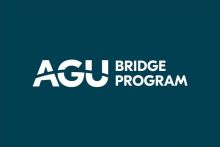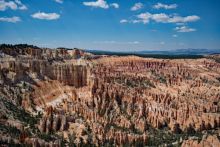Geoscience Currents transmit snapshots of the many facets of the geoscience profession, in-depth case studies of how geoscience is applied, factsheets that provide rigorous introductions to a range of geoscience topics, workforce trends, and career paths.
Partner with us to help support well-informed public policy and decision making with expert, impartial geoscience information. Visit our Sponsorships page for more information or email sponsorships@americangeosciences.org.
Displaying 211 - 220 of a total of 350 items

May 19, 2017
Although sinkhole development in susceptible areas cannot be completely prevented, policy makers and the public can use geologic maps that delineate karst features to develop strategies that can minimize or avoid property damage and personal injuries.
Defining the Problem
Sinkholes, which abound...

May 19, 2017
On November 3, 2002, the 800-mile long Trans-Alaska Pipeline pipeline was able to withstand the largest recorded earthquake for the Denali fault without spilling a drop of oil and with only 3 days shutdown time for inspections. The survival of the pipeline demonstrates the value of combining...

May 19, 2017
Geologic mapping provides the data foundation that makes soil mapping and earthquake simulations possible. This approach also can be used to predict damage in areas where the historical record indicates a risk of potential earthquakes.
Defining the Problem
The density and value of its buildings...

May 19, 2017
Geologic maps are being used in Kentucky to identify areas that have high potential for development of karst features, such as sinkholes and caves.
Defining the Problem
A new interstate highway, I-66, is being planned to pass through the vicinity of Mammoth Cave National Park (Fig. 1). It is one...

May 19, 2017
Remote sensing imagery is used by researchers at the University of Wisconsin–Madison to support recovery efforts after a tornado.
Defining the Problem
Following a tornado, first responders need maps of the width and location (swath) of the damage area. The biggest challenge when integrating...

May 19, 2017
Surface and subsurface mapping of lahar and lahar runout deposits from Glacier Peak volcano has contributed important geologic information for land-management planning and emergency preparedness in the lower Skagit Valley.
Defining the Problem
Active volcanoes, such as Glacier Peak (Fig. 1), pose...

May 19, 2017
Under pressure to restrict aggregate operations, county leaders in Tooele, Utah developed an ordinance to protect the stone, gravel, and sand industry as well as the environment.
Between 1990 and 2000, the population of Tooele, Utah, increased 51.3 percent to 40,735. As demand for construction and...

May 19, 2017
In Garfield County, an area of multiple land uses, geologic maps show the location and quality of the sand and gravel resources. Planners, citizens, and resource developers use this information to locate and evaluate potential deposits and make informed land-use choices.
Defining the Problem
As...

May 05, 2017
Enrollments in U.S. geoscience programs remained robust during the 2015-2016 academic year. Undergraduate enrollments slipped about 5% but remains near record levels, while graduate enrollments dipped slightly. The slip in undergraduate enrollments may reflect a perceived softness in geoscience...
March 31, 2017
Why Recycle?
Recycling saves energy, money, materials, and natural resources, while reducing landfill use. It supplements the national supply of essential materials, reducing dependence on imports. As more minerals and materials become critically important - particularly in advanced technologies...
Pages
Upcoming Webinars


